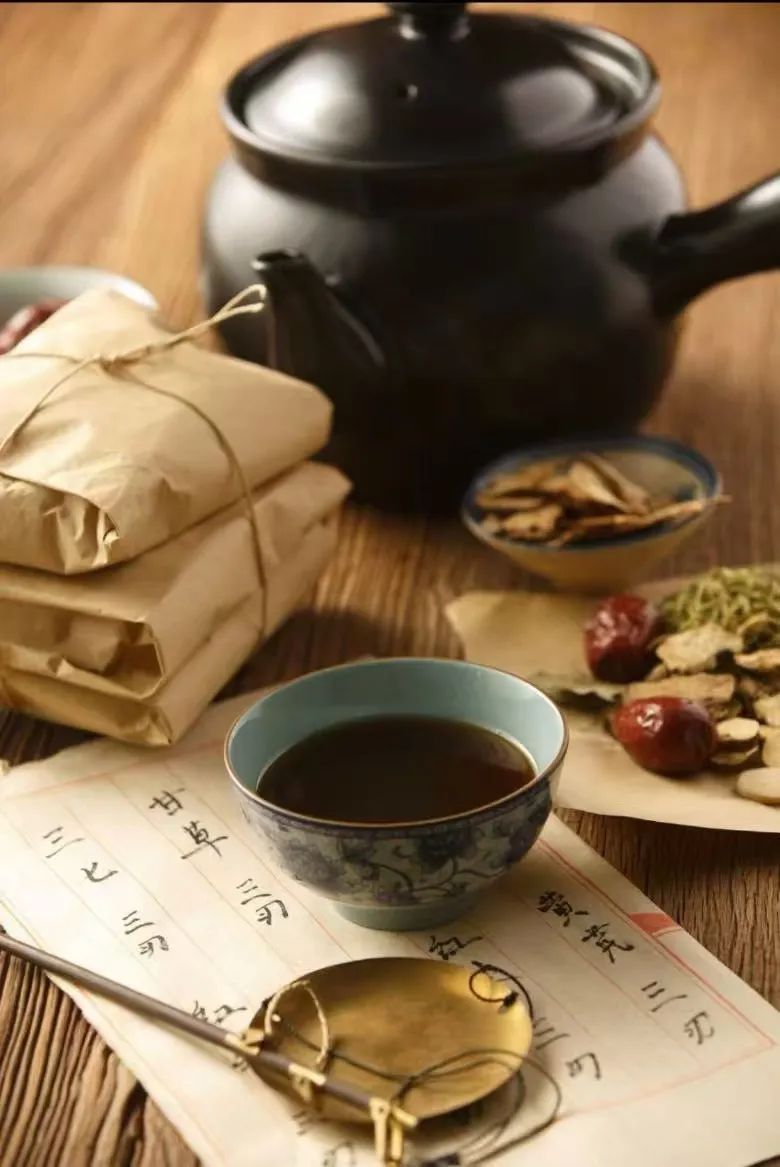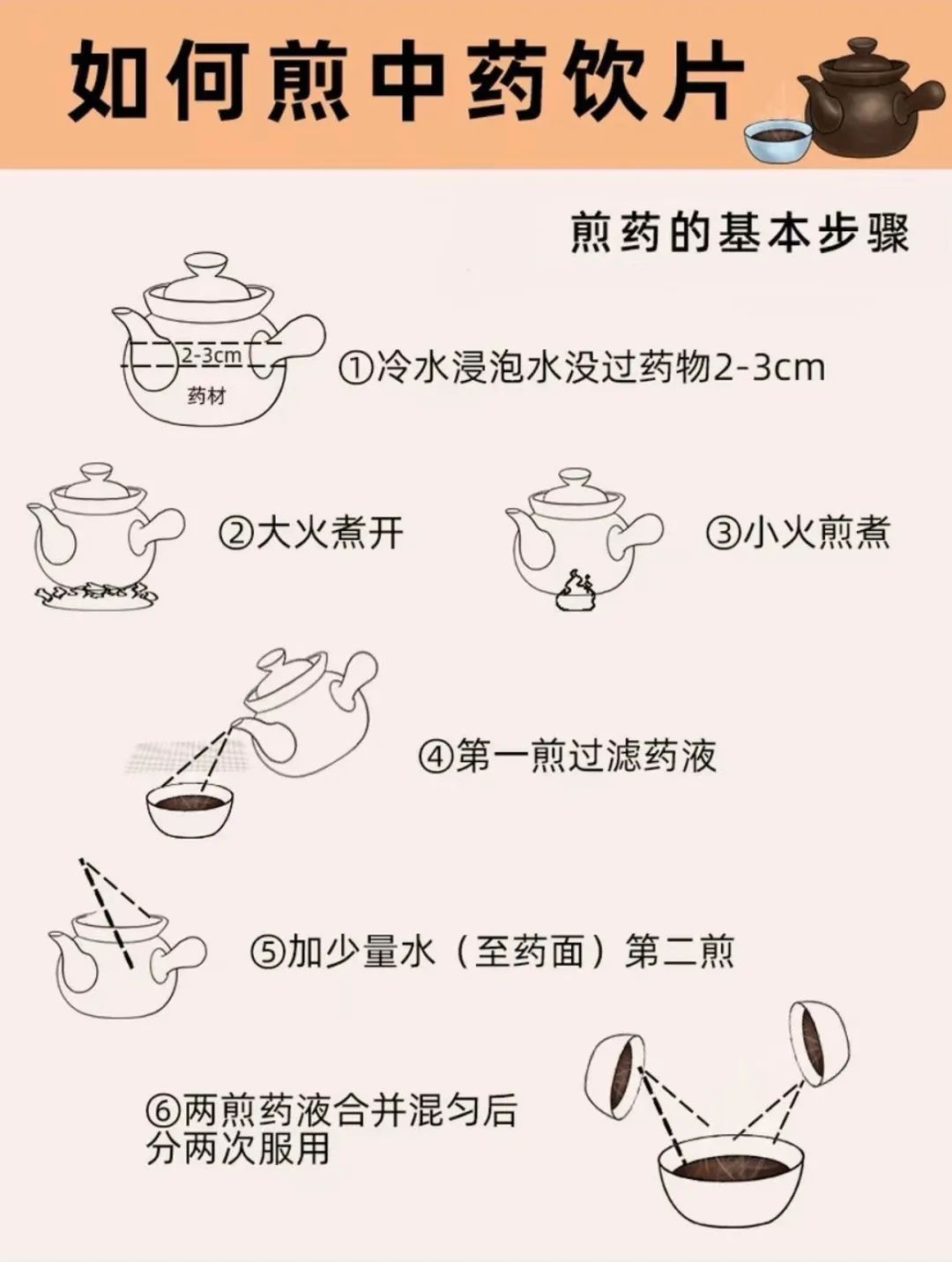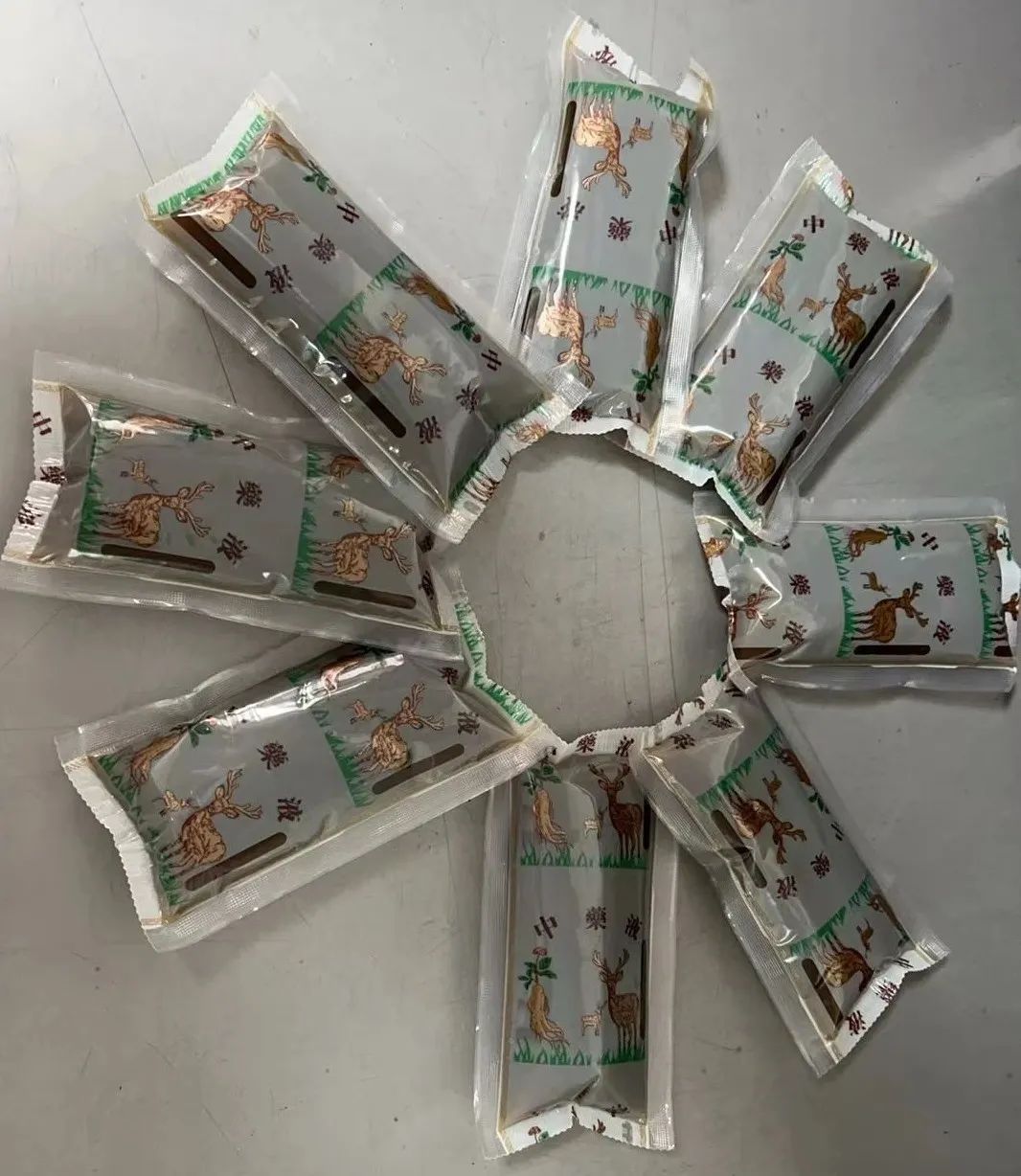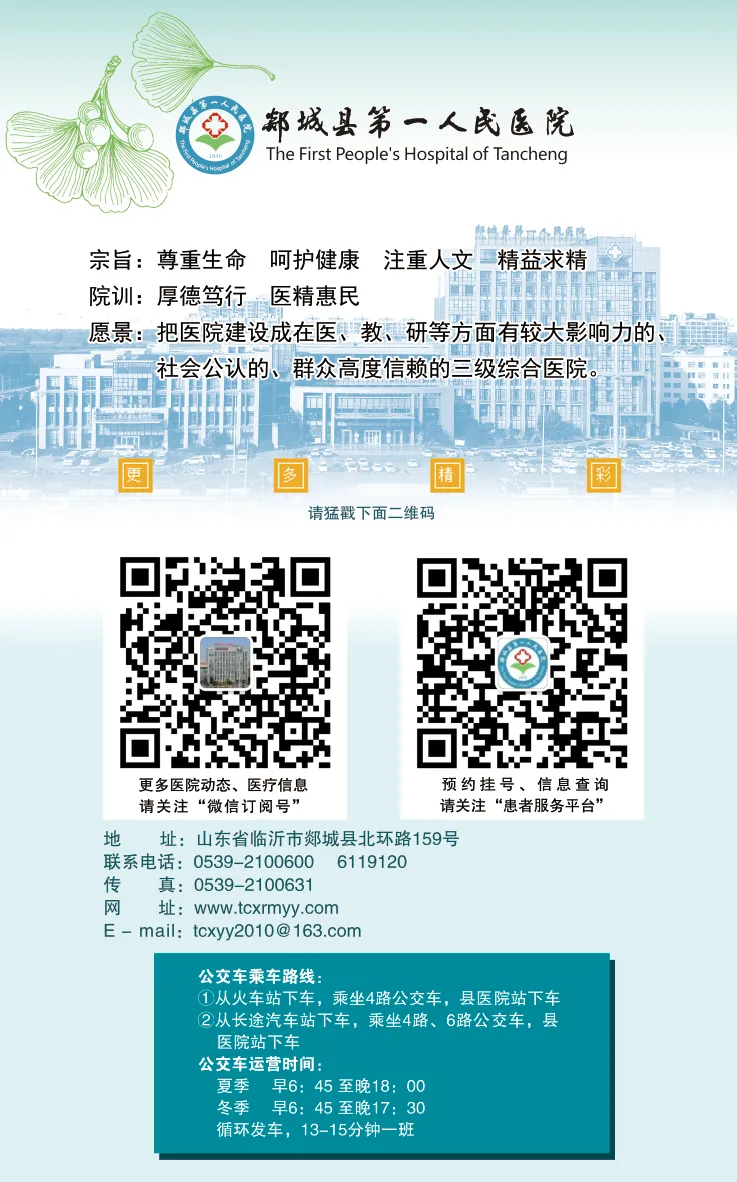

Decoctions refer to liquid preparations made by boiling or soaking traditional Chinese medicine (TCM) herbs to extract their essence. Decoctions are one of the earliest and most widely used forms of TCM. They can adapt to the principles of TCM diagnosis and treatment, allowing for modifications based on symptoms. Decoctions are characterized by their simple preparation, rapid absorption, and quick therapeutic effects.Before decocting, soak the herbs in cold water for about one hour (shorter soaking time in summer to prevent spoilage; longer soaking time in winter is acceptable). Use clay pots, clay kettles, or enamel glass containers for decocting; avoid using iron or aluminum pots (to prevent reactions between the herbs and metals that could reduce efficacy or produce toxic side effects). The water level should be 2-3 cm above the herbs, and there is no need to change the water before decocting. Start by boiling on high heat, then simmer on low heat for about 25 minutes (do not decoct for too long; 25 minutes is optimal for extracting the herbal components). For the second decoction, use less water and decoct for about 10 minutes after boiling, then combine the two decoctions and take in two doses.

Special decoction methods for certain herbs: 1. Pre-decocting: This refers to hard minerals, shells, or toxic herbs, which should generally be pre-decocted for about 30 minutes (for slightly toxic herbs like Fu Ling (Poria), pre-decoct for over an hour; for water buffalo horn (Shui Niu Jiao), pre-decoct for over three hours). 2. Post-addition: This refers to herbs containing volatile oils or aromatic components, which should be added in the last 10 minutes of the first decoction to prevent loss of effective components. 3. Bag decoction: Wrap the herbs in gauze and decoct them with other herbs, mainly used for small seeds (which can stick to the pot) and delicate powders (which can float on the water surface), as well as herbs that may irritate the throat, such as Xin Yi (Magnolia Flower) and Xuan Fu Hua (Inula Flower). 4. Dissolving and mixing: Various gelatinous herbs should be dissolved in the decoction before consumption. 5. Direct consumption: Powdered herbs can be taken directly with the decoction (select products from manufacturers qualified for direct oral consumption). 6. Using decoction instead of water: For herbs with a loose texture or large dosage, such as corn silk (Yu Mi Xu) and Da Zao (Jujube), use the decoction instead of pure water for soaking.Decoction in TCM refers to boiling multiple herbs together, allowing for interactions between the herbs or the formation of new substances, maximizing the efficacy of traditional Chinese medicine.Our hospital’s pharmacy has qualified professionals who have undergone rigorous training to prepare decoctions. The intelligent pharmacy system currently uses the Donghua Original Ten-Function Automatic Decoction Machine, which can perform pre-decocting and post-addition under normal pressure, featuring automatic cleaning, disinfection, sterilization, automatic switching between high and low heat, automatic stirring, and automatic squeezing of herbal residues. The decoction is triple-filtered and packaged, ensuring safety and hygiene, comparable to manual decoction, allowing patients to take it with greater safety and peace of mind.

Text and images: Pharmacy Department Zhou Xiangmao Edited by: Office Fang QingReviewed by: Chen HaiqingIf you find this article helpful,please share, forward, and click “See” belowThank you!

